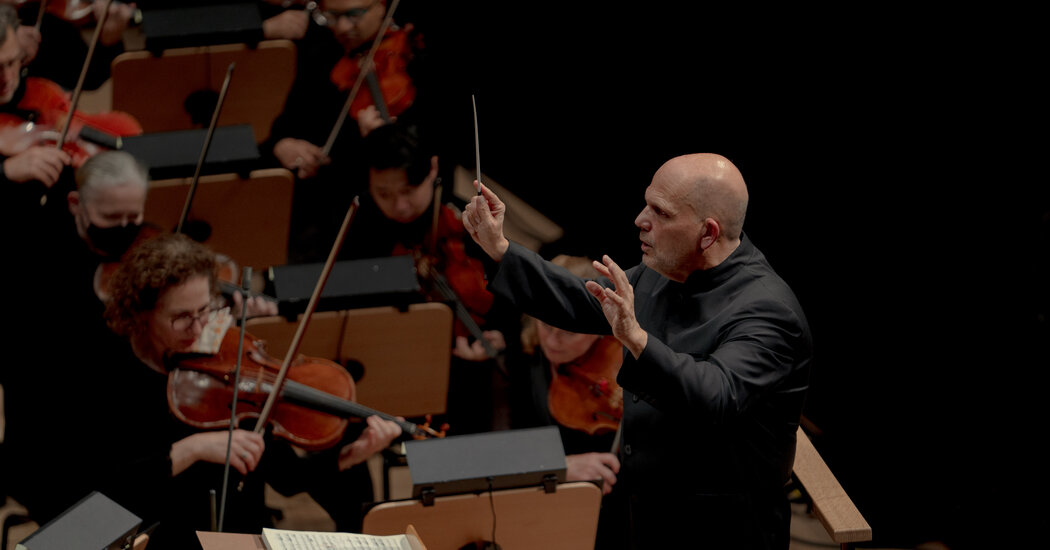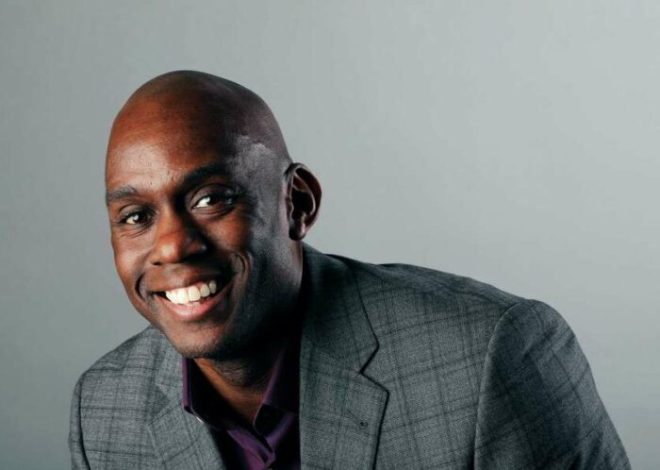
Jaap van Zweden Bids Farewell, and Other Classical Highlights
The New York Philharmonic’s spring gala is not usually of much musical interest. It tends toward mild fare — just enough to keep the donors happy before dinner and dancing.
But this year, the playing will draw closer attention. The gala, on April 24, features the only appearance this season by Gustavo Dudamel, the Philharmonic’s next music director. He will take part in the celebration of the orchestra’s education programs, including its signature Young People’s Concerts, which are turning 100.
The Philharmonic has been careful not to have its Dudamel-led future step too much on its less starry present. This season also brings the final months of Jaap van Zweden’s brief tenure as music director, which will begin on his favored ground: the classics.
A mid-March program of Mozart’s elegant Piano Concerto No. 17 (with Conrad Tao as soloist) and Beethoven’s deathless Fifth Symphony is such a sure audience pleaser that the Philharmonic is confidently giving it four performances, rather than the usual three.
Van Zweden led the orchestra in Beethoven’s Fifth in October 2015, a few months before he got the music director job. I wrote then that “conducting this imaginative and playing this varied don’t appear at Geffen Hall every week.” His meticulousness didn’t come off as mannered, as it sometimes does. The inner two movements felt especially inventive, and I’ll be listening for whether the whole thing has the polish and momentum that have tended to elude the orchestra recently.
A few days later, van Zweden will turn his attention to the new, as the Philharmonic plays fresh pieces by Tan Dun — a concerto for the principal trombonist, Joseph Alessi, called “Three Muses in Video Game” — and Joel Thompson.
Thompson’s premiere, “To See the Sky,” is the longest instrumental work of his young career. An Atlanta native, he has said the work is influenced by Afro-Caribbean rhythms and the Southern hip-hop tradition, among other styles. Even this contemporary-minded program, though, is anchored by a standard, Mendelssohn’s fiery “Scottish” Symphony.
Among the Philharmonic’s guest conductors this spring is Manfred Honeck, who was favored by some during the search process that landed on van Zweden; in April, Honeck leads a premiere by Katherine Balch as well as works by Rachmaninoff and Tchaikovsky. And in a sign that the orchestra is exploring a new generation of talent, even with Dudamel starting soon, there will be podium debuts by Karina Canellakis and Thomas Sondergard before van Zweden returns for his climactic stretch in late May.
The first of those final programs starts with Sofia Gubaidulina’s fierce Viola Concerto, from 1996, then turns to Mozart’s Requiem, an apt way to approach an ending. The next week focuses on soloists drawn from the orchestra in works by Mozart and Brahms, and Shostakovich’s Concerto in C minor for Piano, Trumpet and Strings, which has never been played by the Philharmonic.
The pianist in that concerto — and the only guest from outside the ensemble’s ranks — is the fascinating Igor Levit, who will also be appearing at Carnegie Hall in recital on March 7. His program at Carnegie delves into one of his longstanding interests: arrangements of older pieces, the way that music is passed down and adapted.
Liszt’s dizzying version of Beethoven’s “Eroica” Symphony is on offer, as well as Ronald Stevenson’s of the Adagio from Mahler’s 10th. Filling out the concert, and making it appropriate material for the tail end of Carnegie’s loosely plotted Weimar festival, is Hindemith’s Roaring 20s-ish suite “1922.”
Arrangements are also on the agenda for the pianist Imogen Cooper, making a rare New York appearance at the 92nd Street Y on May 3. Her versions of Bach are by Busoni and Kempff, and appear on a program that also includes works by Beethoven, Schubert and Thomas Adès.
In April, the Metropolitan Opera will unveil a splashy new production — its first — of John Adams and Peter Sellars’s moving Nativity oratorio “El Niño.” But for those watching the Met as it struggles for financial stability and artistic balance, the most intriguing events this spring are revivals — and not just the much-anticipated debut of the riveting soprano Asmik Grigorian in Puccini’s “Madama Butterfly.”
Terence Blanchard and Kasi Lemmons’s “Fire Shut Up in My Bones” and Kevin Puts and Greg Pierce’s “The Hours” are returning, not long after their well-sold Met premieres, and both will be watched for whether audience demand holds up for a second go-round with less publicity.
“Fire” reopened the opera house at the start of the 2021-22 season after the long pandemic shutdown, and was heavily promoted for being the company’s first work by a Black composer. Will it retain as much interest under less of a spotlight? And while “The Hours” will be buttressed by the same central trio of stars — Renée Fleming, Kelli O’Hara and Joyce DiDonato — it’s unclear how many repeat customers there will be for this blandish work.
Further uptown, at Columbia University, the Miller Theater’s invaluable Composer Portraits series offers a dive into the spare, emotionally charged, often extended-duration music of Sarah Hennies on April 4. The Mivos Quartet will play two pieces: the hourlong “Borrowed Light” and, joined by the two pianists and two percussionists of Yarn/Wire, “Spiral Organ.”
And, after premiering Natacha Diels’s “Beautiful Trouble” in Philadelphia this month, the JACK Quartet brings it to Roulette in Brooklyn on March 15. The five-part piece, which marries surreal short films to a just-as-absurdist live performance, is an ideal vehicle for JACK’s open-minded virtuosity.
Finally, a finale, and a sprawling one. For Jaap van Zweden at the Philharmonic, after a Requiem must come, early in June, a “Resurrection”: Mahler’s Second Symphony, one of the grandest works in the repertory and, with its long choral peroration, a stirring send-off.

